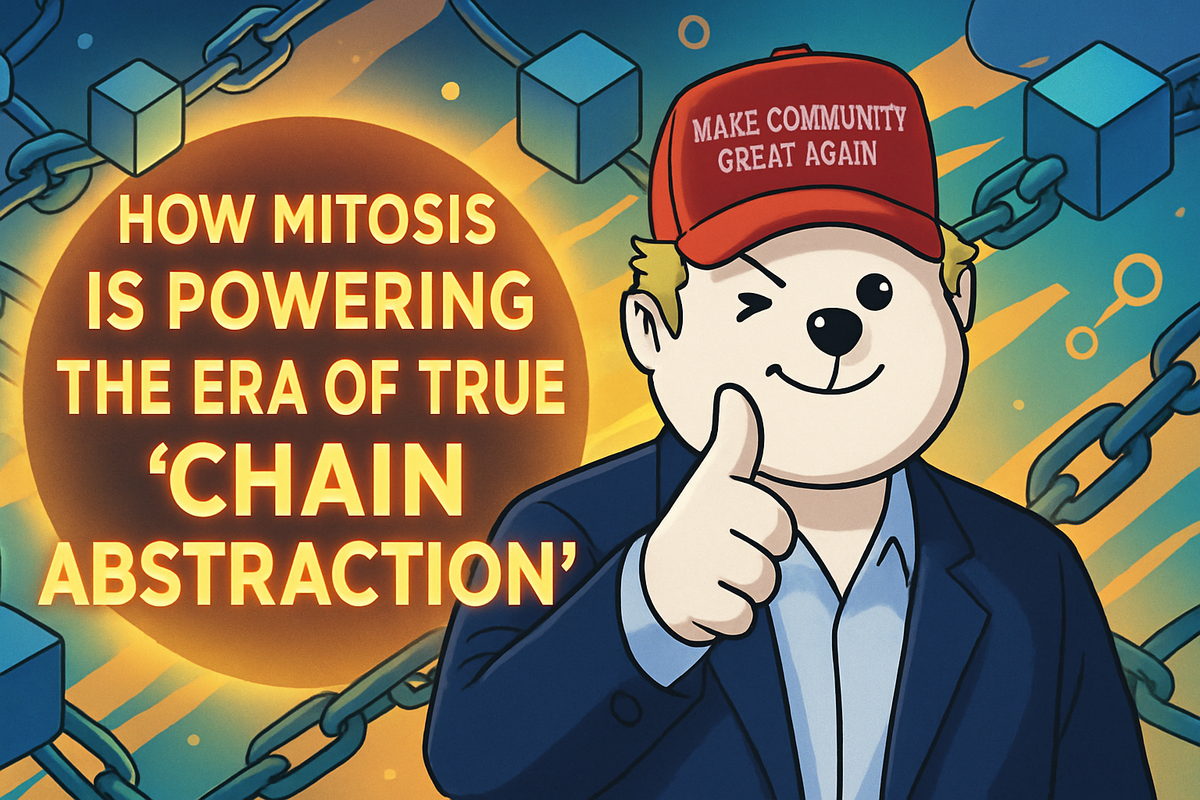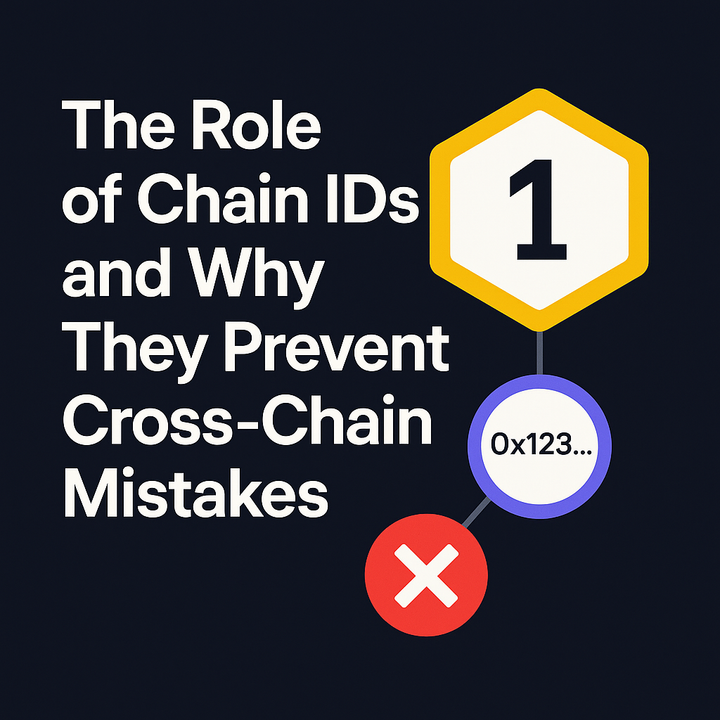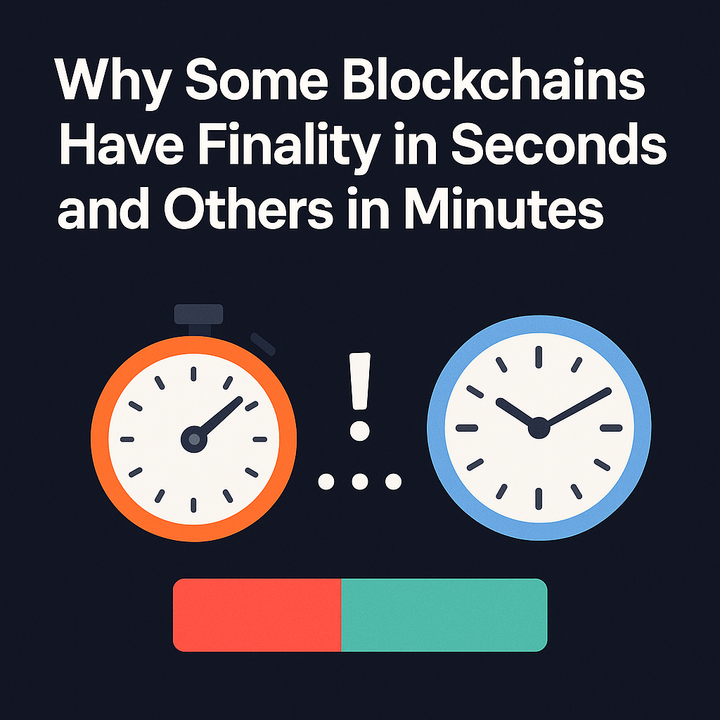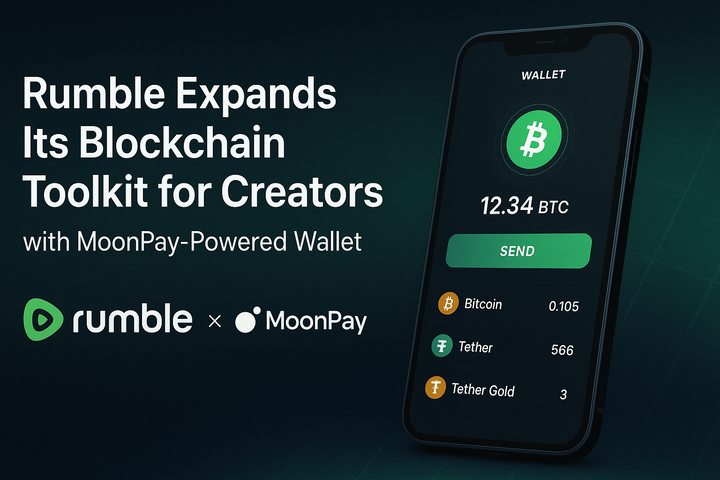The Endgame for Web3 UX: How Mitosis is Powering the Era of True "Chain Abstraction"

1. Introduction: From Multichain to Omnichain – The Evolution of User Experience
We have already discussed the revolutions in Web3 UX: Account Abstraction (AA) frees us from seed phrases and gas problems, while Intent-Based Architectures allow us to express desired outcomes rather than execute transactions. These innovations significantly simplify the user's life.
However, they only solve part of the problem. Even with a "smart" wallet and the ability to express intents, the user still exists in a multichain paradigm. They still see that their assets are on "Arbitrum," and the dApp they want to use runs on "Polygon." They are still aware of the borders, even if crossing them has become easier.
But what if we take the next, final step? What if we create a Web3 experience where the user doesn't know and doesn't need to know which blockchain they are currently on? This is the concept of "Chain Abstraction."
What is "Chain Abstraction"?
"Chain Abstraction" is the Holy Grail of Web3 UX. It is a state where the underlying blockchains become a completely invisible infrastructure layer for the end-user.
What this looks like in practice:
- A Single, Universal Balance: A user sees in their wallet simply "1000 USDC" and "10 ETH," not "300 USDC on Arbitrum, 500 USDC on Polygon, and 200 USDC on Base."
- Interaction with Any dApp: A user visits any dApp's website, connects their wallet, and just starts using it. They don't need to "switch networks" in MetaMask.
- Automatic Optimization: The system itself, "under the hood," chooses the best blockchain to execute the user's transaction based on gas cost, speed, liquidity, and other parameters.
This is a transition from multichain (the user is aware of and interacts with many networks) to omnichain (the user interacts with a single space, and the system manages the network interactions).
Why Is This So Important?
Chain Abstraction is not just about convenience. It's a fundamental shift that can:
- Lower the barrier to entry for Web3 to zero: A new user will be able to interact with DeFi or NFTs as easily as with Instagram or their banking app.
- Maximize capital efficiency: User funds will not sit idle on one network but can be automatically used where it is most profitable.
- Intensify competition among blockchains: L1s and L2s will compete for user transactions at the technology level (speed, price, security), not by "locking in" users and liquidity into their ecosystem.
Mitosis: The Indispensable "Engine" for Chain Abstraction
Creating such magic is impossible without a powerful, reliable, and efficient "engine" that will move assets between networks in real-time "behind the scenes." And this is where Mitosis, as a cross-chain liquidity protocol, plays an absolutely indispensable role.
For a "Chain Abstraction" system to work, it needs a partner that can:
- Guarantee Security: Moving user assets without their direct control at every step requires the highest level of trust and security. Mitosis's protection, based on EigenLayer AVS, provides this level.
- Ensure Deep Liquidity: For instant execution of transactions on different networks, "on-demand" liquidity is needed. Mitosis's Ecosystem-Owned Liquidity (EOL) model is perfectly suited for this.
- Operate Quickly and Efficiently: The system must make decisions and move assets in seconds. Mitosis is designed for fast and efficient transfers.
Mitosis becomes that "invisible" execution layer that allows Chain Abstraction systems to turn the complex multichain world into a unified and simple space for the user.
What Will You Learn From This Article?
In this article, we will explore in detail how Mitosis becomes a key element for realizing the vision of "Chain Abstraction":
- We will walk through a specific example of what the user journey will look like in a world of complete Chain Abstraction.
- We will analyze how Mitosis's architecture solves the main technical challenges for creating such systems.
- We will discuss how this synergy changes the game for dApps, wallets, and the blockchains themselves.
We will show how Mitosis is helping Web3 take the final step in its evolution – from a technology for enthusiasts to an intuitive and accessible environment for billions.
2. The Anatomy of "Invisible" Cross-Chain: Mitosis in Action
Let's break down a specific example of what the user experience might look like in a world of complete "Chain Abstraction," and the critically important role Mitosis plays in it.
Scenario: Buying an NFT in a Chain-Abstracted World
Let's imagine Alice. She wants to buy an NFT from a new, popular collection.
- The Old Way (Multichain):
- Alice finds out the NFT is sold on a marketplace on the Polygon blockchain.
- She checks her wallet and sees that her ETH is on the Arbitrum network.
- She searches for a bridge from Arbitrum to Polygon, assesses its security and fees.
- She transfers the ETH, and waits.
- She buys some MATIC for gas on Polygon.
- Finally, she goes to the marketplace and makes the purchase.
Result: long, complicated, risky.
- The New Way (Chain Abstraction + Mitosis):
- Step 1: A Simple Action. Alice sees the NFT on an aggregator site (or even a social network). Next to it is a button: "Buy for 0.1 ETH." She clicks it.
- Step 2: The "Under the Hood" Work. Her smart wallet (with Chain Abstraction support) initiates an intent: "Acquire NFT #1234 on Polygon, using 0.1 ETH (or equivalent in USDC) from my total balance."
- Analysis: A system of "solvers" receives this intent. It sees that the NFT is on Polygon and Alice has 0.1 ETH on Arbitrum. The system also determines that gas on Polygon is currently cheaper than on other networks.
- Route Construction: The "solver" builds an optimal plan:
a. Take 0.1 ETH from Alice's address on Arbitrum.
b. Use Mitosis to instantly transfer 0.1 ETH from Arbitrum to Polygon.
c. On Polygon, use the transferred 0.1 ETH to buy the NFT on the marketplace.
d. Pay the gas fee on Polygon using a fraction of Alice's funds (e.g., by automatically swapping ~$0.01 of her ETH for MATIC via Mitosis or another protocol).
- Step 3: Mitosis's Role as the Executor.
- The "solver" calls the Mitosis API to execute step (b).
- Mitosis, thanks to its AVS security, guarantees that the transfer will be reliable.
- Thanks to its EOL liquidity, Mitosis ensures the instant availability of ETH on Polygon, not making the system wait for long confirmations.
- Step 4: The Result for the User. Alice signs a single transaction in her wallet that authorizes this entire complex process. A few moments later, she receives a notification: "Congratulations, you have acquired NFT #1234!" The NFT appears in her wallet, in a unified "My NFTs" section. She never knew (and didn't need to know) that her funds took a journey across multiple networks.
How Mitosis Solves the Key Challenges for Chain Abstraction?
- The Speed and Liquidity Problem: Chain Abstraction requires instant access to liquidity on different networks to execute transactions. Waiting 10 minutes for a bridge to process a transfer is unacceptable. Mitosis's EOL solves this problem by providing "hot" liquidity on demand.
- The Security Problem: Delegating complex cross-chain operations to automated systems requires absolute confidence in the security of the underlying transport layer. Mitosis's AVS-based security gives this confidence to developers of Chain Abstraction systems.
- The Standardization Problem: Instead of intent "solvers" having to integrate with dozens of different bridges, each with its own API and type of "wrapped" tokens, Mitosis offers a single, standardized entry point for cross-chain liquidity.
Conclusion: Mitosis – The Invisible Foundation for a Simple Web3
Chain Abstraction is not just another trend; it is the ultimate goal of the user experience evolution in Web3. It is a future where the power and decentralization of blockchain are combined with the simplicity and intuitiveness of the best Web2 applications.
In this future, users will stop being "crypto enthusiasts" and will become just users. They will interact with applications, not with blockchains. They will achieve their goals, not execute transactions.
But this surface-level simplicity is only possible thanks to the incredible complexity and reliability of the infrastructure "under the hood." Mitosis, as a cross-chain liquidity protocol designed for maximum security and efficiency, positions itself as the indispensable foundation for this new era. It becomes the "engine" that will seamlessly move assets, execute intents, and make the magic of Chain Abstraction a reality, all invisibly to the user.
While others are building bridges, Mitosis is helping to build a future where bridges become invisible.
Learn more about Mitosis:
- Explore details on the official website: https://www.mitosis.org/
- Follow announcements on Twitter: https://twitter.com/MitosisOrg
- Participate in discussions on Discord: https://discord.com/invite/mitosis
- Read articles and updates on Medium: https://medium.com/mitosisorg
- Blog: https://blog.mitosis.org/



Comments ()